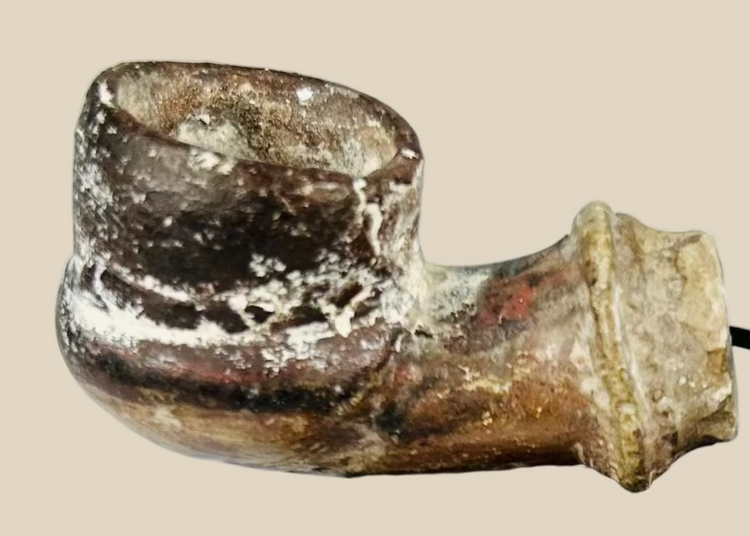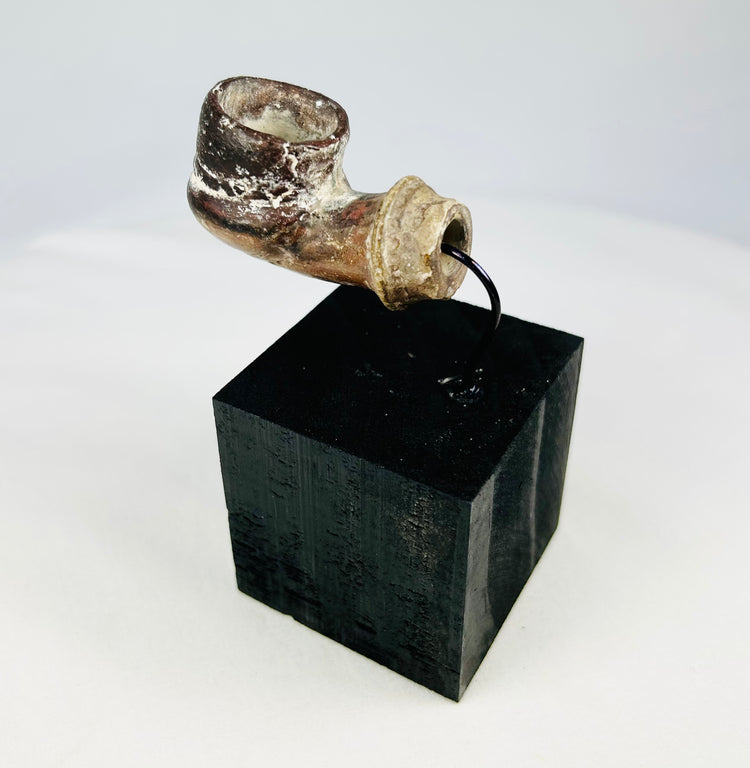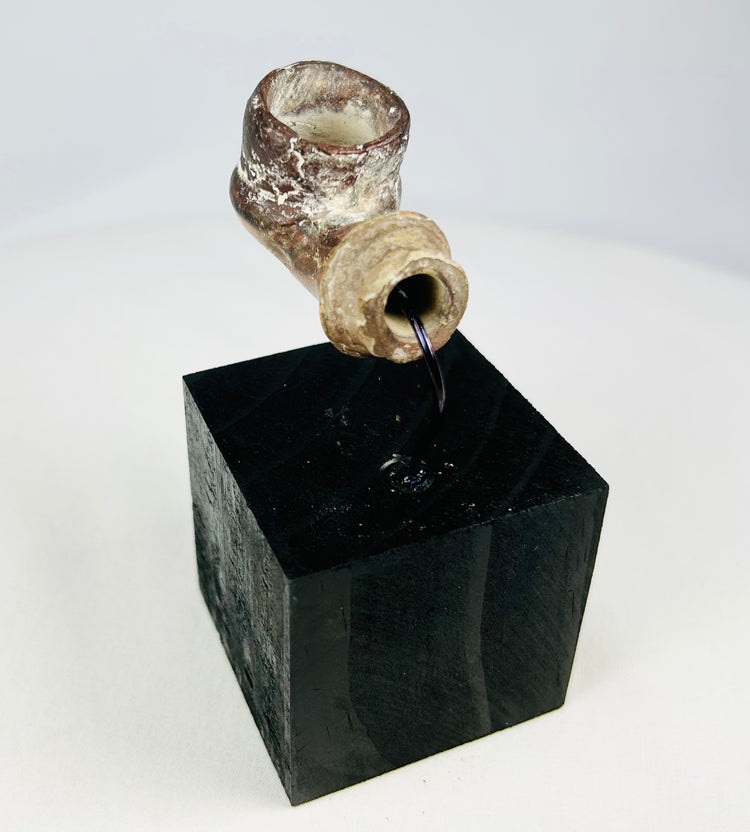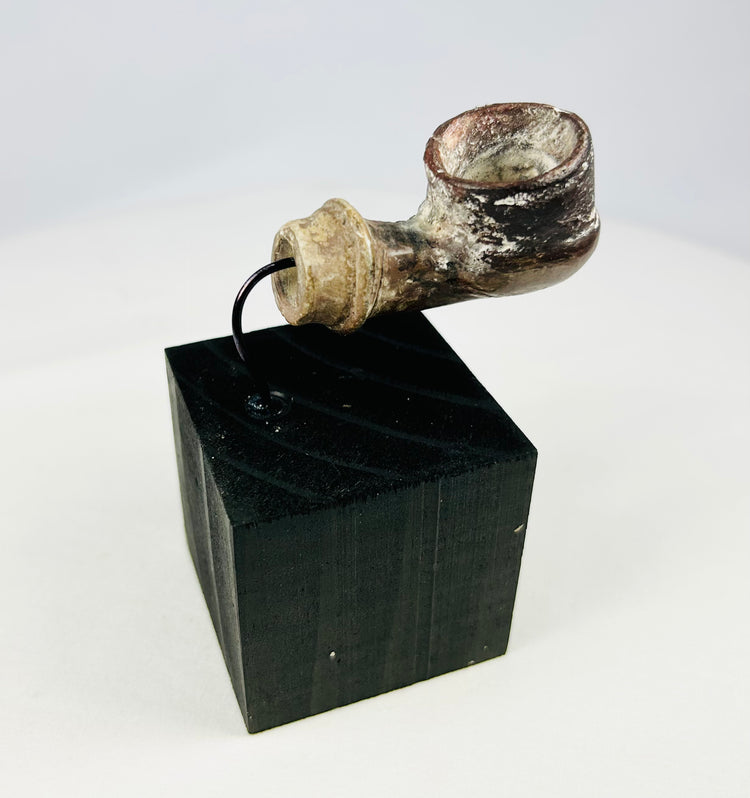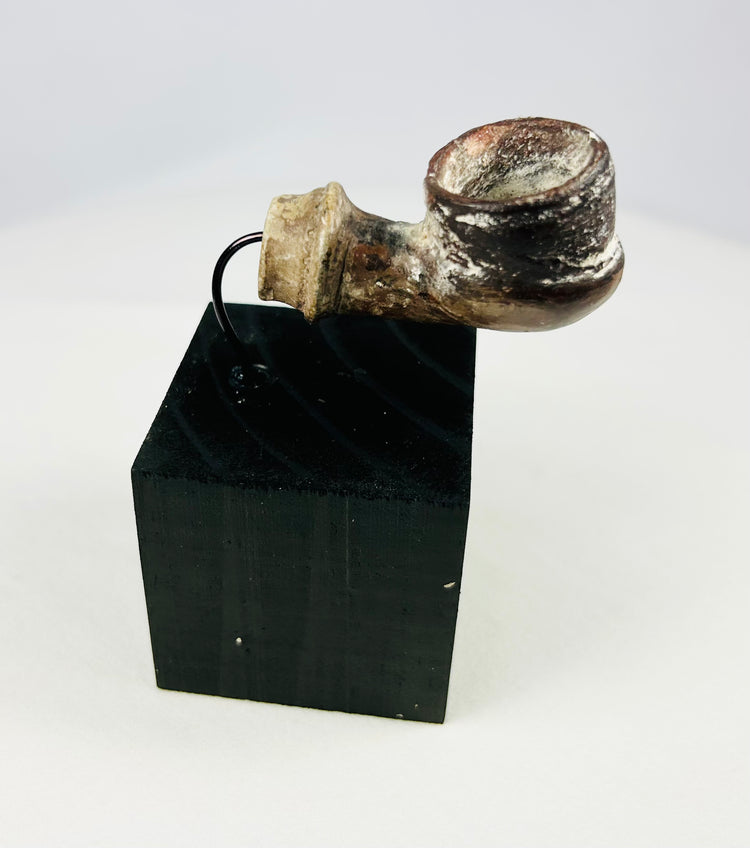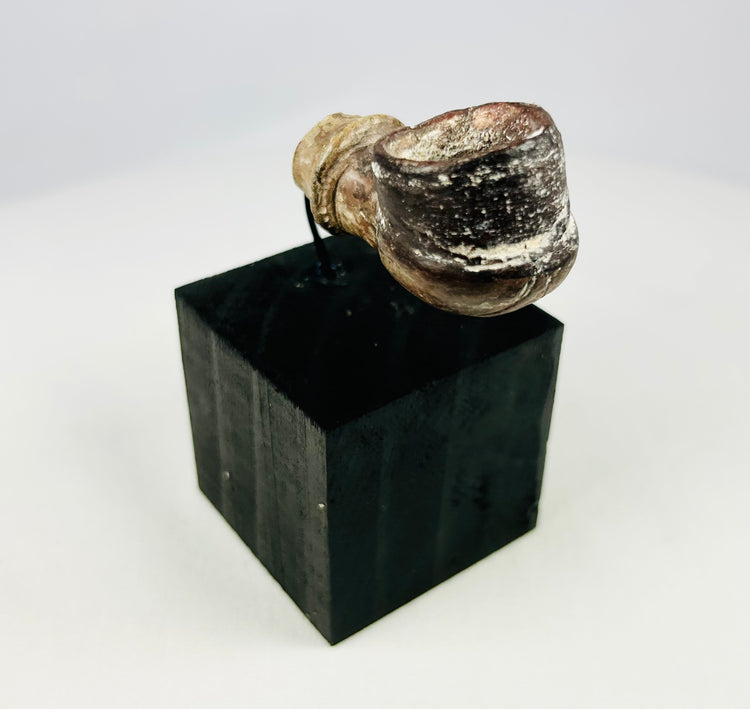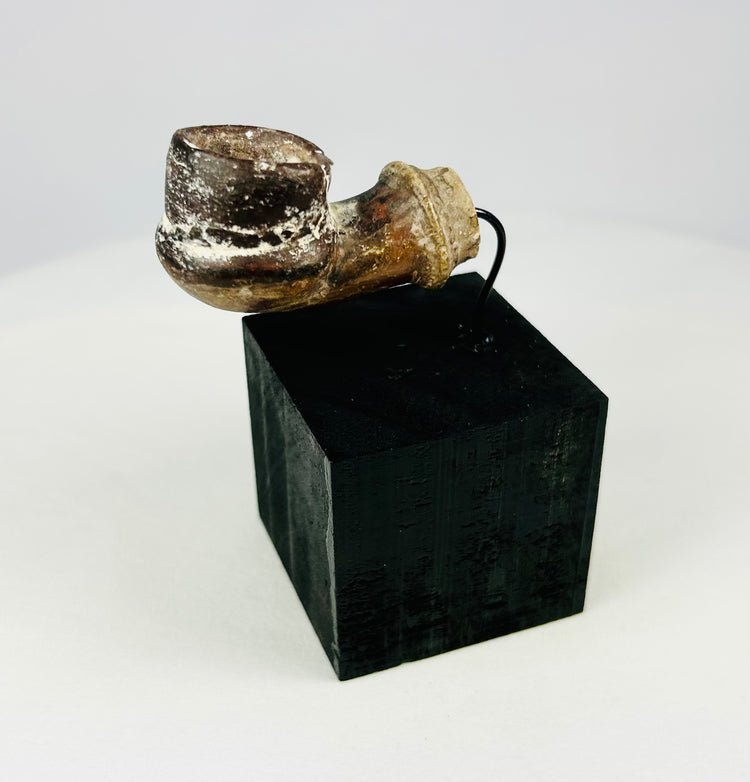Archaeological Pottery Spout/Pipe | North African or Middle Eastern Origin | Circa 1800s
Description
More
Less
Historical Context & Origin
Region: Middle East or North Africa
Material: Earthenware pottery with traces of slip and mineral deposits
Period: 18th–19th century
Description
This small pottery fragment, hand-formed and fired in earthenware, consists of a rounded bowl-like chamber with a narrow projecting stem. Likely part of a larger vessel or apparatus, it may have functioned as a spout attachment, an element of a water pipe (nargile), or a component of an incense burner. Its compact form, surface mineral accretions, and encrustations attest to both its utilitarian origin and its archaeological survival.
Features
- Hand-molded earthenware fragment with projecting nozzle
- Rounded bowl-like chamber for channeling liquids or smoke
- Mineral accretions and patina from burial context
- Compact and displayable as an archaeological or ethnographic artifact
Cultural Significance
Clay was among the most versatile materials in the Islamic world, widely used for domestic vessels, ritual implements, and smoking or incense devices. Fragments such as this provide valuable insight into everyday life across the Middle East and North Africa during the Ottoman and early modern periods. Though modest in form, these pieces reflect cultural traditions tied to hospitality, ritual, and household activity. Their survival highlights the durability of earthenware as well as the continuity of ceramic traditions across centuries.
Condition
Fragmentary but stable. Mineral deposits, surface wear, and edge losses consistent with archaeological recovery and age. No evidence of modern restoration.
Dimensions (approximate)
Length: 3.5 in
Width: 2 in
Depth: 2 in
Age
18th–19th century
Description
Historical Context & Origin
Region: Middle East or North Africa
Material: Earthenware pottery with traces of slip and mineral deposits
Period: 18th–19th century
Description
This small pottery fragment, hand-formed and fired in earthenware, consists of a rounded bowl-like chamber with a narrow projecting stem. Likely part of a larger vessel or apparatus, it may have functioned as a spout attachment, an element of a water pipe (nargile), or a component of an incense burner. Its compact form, surface mineral accretions, and encrustations attest to both its utilitarian origin and its archaeological survival.
Features
- Hand-molded earthenware fragment with projecting nozzle
- Rounded bowl-like chamber for channeling liquids or smoke
- Mineral accretions and patina from burial context
- Compact and displayable as an archaeological or ethnographic artifact
Cultural Significance
Clay was among the most versatile materials in the Islamic world, widely used for domestic vessels, ritual implements, and smoking or incense devices. Fragments such as this provide valuable insight into everyday life across the Middle East and North Africa during the Ottoman and early modern periods. Though modest in form, these pieces reflect cultural traditions tied to hospitality, ritual, and household activity. Their survival highlights the durability of earthenware as well as the continuity of ceramic traditions across centuries.
Condition
Fragmentary but stable. Mineral deposits, surface wear, and edge losses consistent with archaeological recovery and age. No evidence of modern restoration.
Dimensions (approximate)
Length: 3.5 in
Width: 2 in
Depth: 2 in
Age
18th–19th century
You May Also Like






















